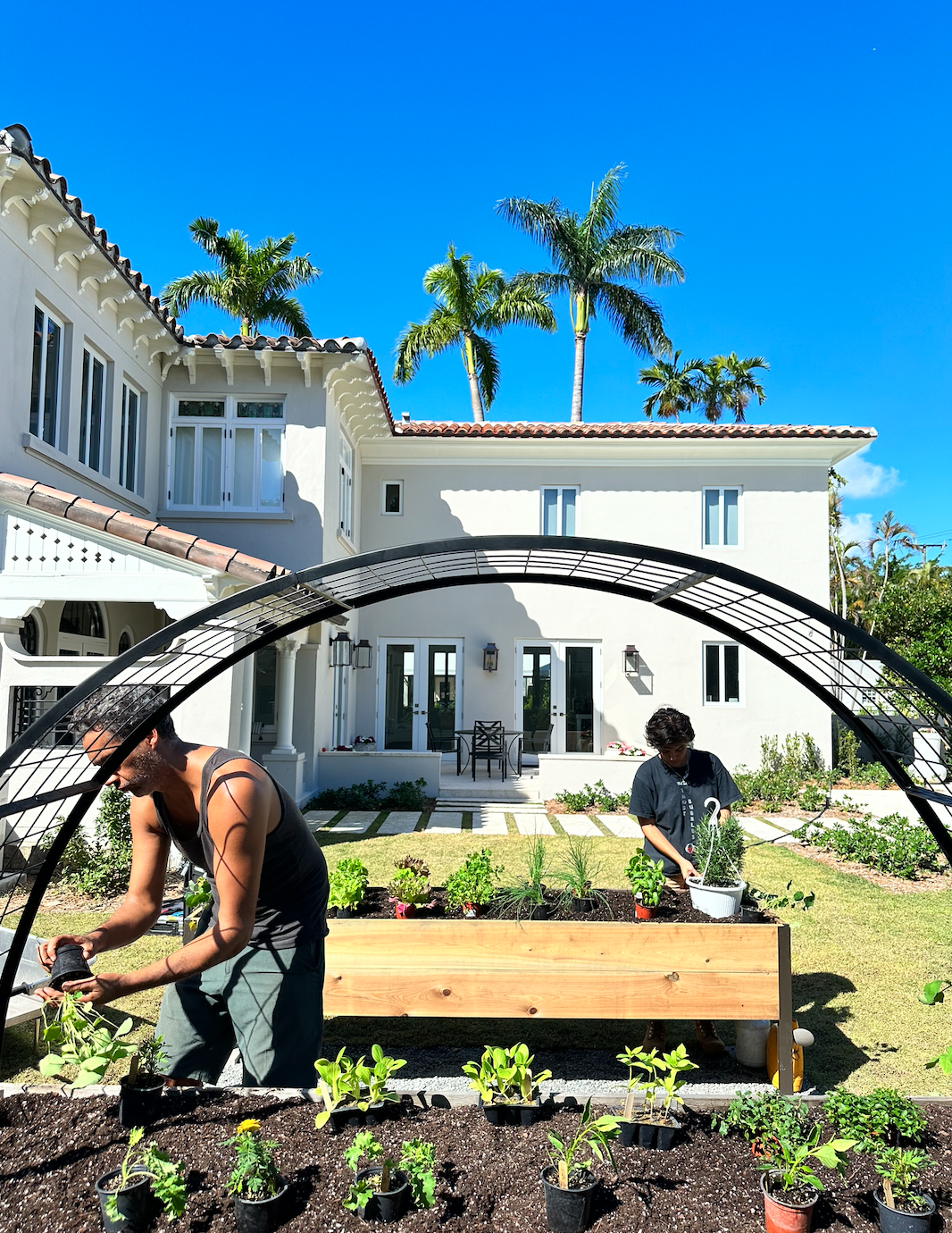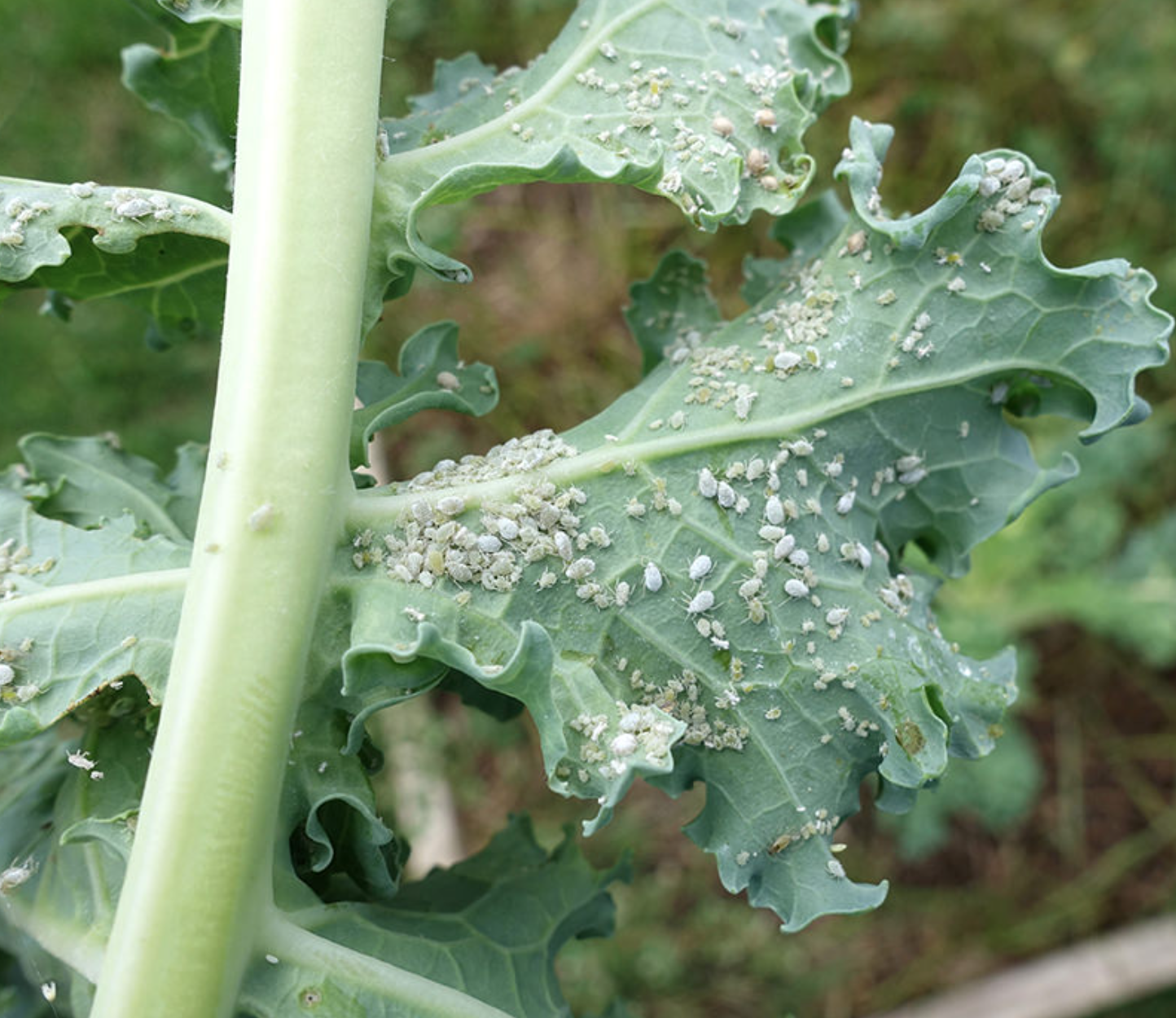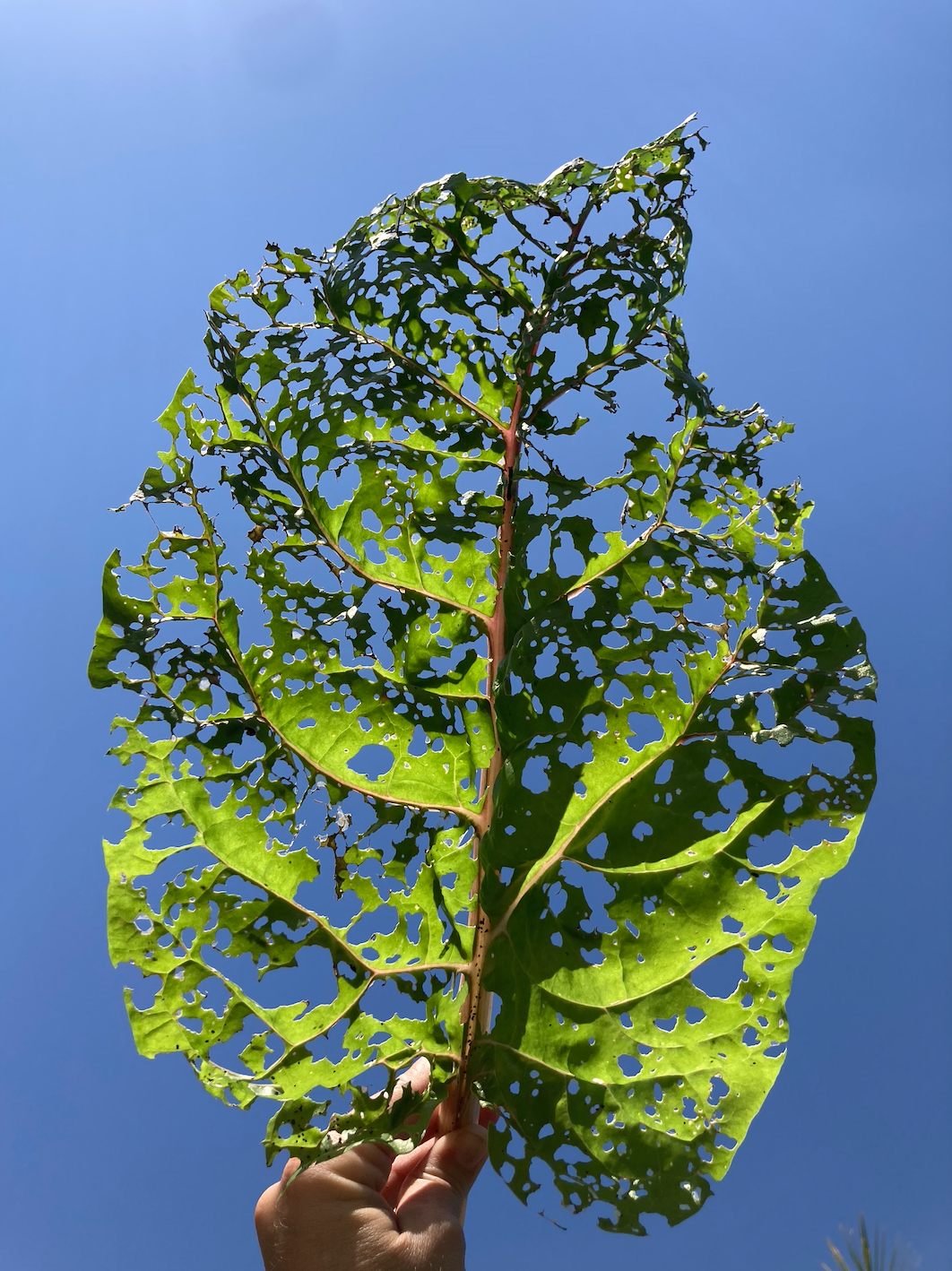November Gardening in South Florida: Now the Real Work Begins!
In November we typically start seeing a significant drop between the daily temperature and the overnight temperature. Even a small difference in night time temperature can make a big difference for your garden. The humidity in South Florida is the reason such small fluctuations in temperature from day to night are important. When plants are too hot they switch from growing mode into survival mode, pausing their rate of growth and other vital functions and switching to focus on perspiration for increased cooling. Plants perspire via their leaves which is what produces wilting. Sometimes when its extra hot out you'll notice your plants leaves wilting even when theres plenty of water in the soil, which means that its so hot that your plants are perspiring faster than they can drink more water. At night, plants get a much needed break from this stress and are able to switch back into growth mode, even though there's no sun out for photosynthesis. This day to night temperature change is the key reason why it suddenly becomes much easier to make happy plants and grow food in November and the cooler months that follow.
If you haven't planted your garden for fall yet make sure to read our October gardening blog post which is all about spacing, succession planting, and how to plan your garden. If you've already planted then lets talk about starting a maintenance routine. First you'll want to make sure the basic needs of your plants are accounted for. Your garden should get 8 hours or more of direct sunlight which can be tricky in an urban environment because neighboring buildings and landscaping will block hours of sunlight from your garden. As long as you have a minimum of 6 hours you should be able to grow herbs and greens successfully. The other thing to check off is proper soil prep before planting. Many beginners buy soil from us or in bags from big box stores and plant right into it without adding fertilizer, which is a big mistake. We recommend amending your soil with an organic fertilizer like Sustane 464 and compost. Ideally you're making your own compost, but if not, we sell awesome locally made compost from A Zero Waste Culture. Many beginners think that "organic" gardening means not adding fertilizer or using pesticides but to the contrary, it can oftentimes mean adding MORE of those things, just the organic version instead of the chemical one.
Another big mistake beginners make is thinking that once they planted their garden the bulk of the work is "done", but that's far from the truth. Your work is just beginning!
While its crucial to add organic fertilizer at the planting stage, plant food is water soluble and its also food... the plants will consume it and run out! So we recommend adding a foliar feeding to your maintenance routine once every 2 weeks. Foliar feeding is extra cool because with this type of fertilizer your plants can use their leaves and branches to absorb the food too (usually that task is done just by the root system). We recommend using Neptunes Harvest fish emulsion mixed with water. Each product has its own instructions for mixing and use, so check the packaging for more info. Once you mix it with water in a watering can you just give your whole garden a good dousing and let the plants drink it up.
Pests might also start to show up in your garden despite it being so early in the season. That's because summer is our most pest-laden season, since all the buggies reproduce at higher rates when its extra hot, wet and humid out. So, while your garden might have been empty of plants through the summer your yard and your neighbors yard and the whole city has lots more bugs living in it, just waiting for you to plant your tender new tomatoes & kale plants. The little white moths that flutter out of your grass when you walk around will land on your plants and lay their eggs on their leaves, and the whitefly living on your neighbors ficus hedge will drift over on the wind and take up residence on your pepper plant. Don't be tricked into thinking that just because your plants are "new" that your garden is pure of bug!
Below is our run down of the most popular South Florida pests, so that if you are already battling them in your garden you can get a head start on identifying and treating them organically. Treating pests organically is more of a commitment than just blasting them with toxic pesticides, as you can imagine. IPM is a term that means "integrated pest management" and it looks at several factors that are causing a problem and you should be ready to take multiple actions. Sometimes a good way to get more light and air flow in and around your plants is to prune away some foliage. This might kill two birds with one stone. Pruning away infested leaves is actually the first line of defense against most pest issues, especially insect infestations such as aphids, white fly, mealy bugs and spider mites. All of these insects fall under the "piercing and sucking" category and they tend to cling to the leaves of plants, particularly on tender growing tips as well as undersides of largest oldest leaves. Check those areas first and prune away any plant parts that are visibly covered in bugs. By doing this you've already reduced the pest population by a huge percentage.
One of the most important exceptions to this rule is when you have a plant infected with a virus! Viral infections are typically not curable and plants showing signs of a virus should be entirely removed from your garden and thrown away. Clean your hands and tools with a disinfectant soap before working on healthy plants to prevent the spread of the virus. Leaving a virus infected plant in your garden causes other plants to become infected through your touch or by insects that visit an infected plants and then visit a healthy plant.
Even in IPM there is room for spraying. We spray with OMRI certified organic products when it makes sense to do so. The key is to use these products wisely and in combination with other actions to remediate the problem in a holistic way. What happens when someone simply sprays for a pest issue once is that the pest problem might go away for a moment, but if the life cycle of the pest isn't broken then new bugs will be born days or weeks later and continue to infest your plants. Our favorite and most often used certified organic pesticides are Pyganic, Spinosad & BT. You'll see them referenced throughout our pest guide below. We don't recommend relying heavily on homemade sprays made out of things like milk & dishwashing liquids, they will leave you feeling frustrated and like you've tried everything (you haven't) and are getting nowhere.
Here's our guide to common garden pests and how to treat them. Our biggest piece of advice when it comes to identifying pests is to use detailed language to seek out information online. Pests are a huge gardening issue so there are TONS of resources online, including forums and groups that exist just to help newbies identify and treat them. Before you reach out to us or your best gardening pal considering hitting the google and seeing what you can find for yourself. As you examine your plant take clear well lit photos (not fuzzy, not at night, etc.) and also write down some good descriptors. Try expanding your vocabulary from something like "big black bug in my garden" to "dime sized beetle on my pepper plant". I promise if you google "thumb sized neon green worm with horn on my tomato plant" instead of "giant gross worm on my plant" you will instantly learn that you have your first hornworm of the season, and there will be many other organic gardener giving you tips on how to manage them.
APHIDS
Very common. soft bodied insect, can be light green, yellow, black, grey. feed on a variety of plants, commonly found on leafy greens. cluster mostly on new growth, secret a sugary fluid called “honeydew” that makes food crops less appetizing and is also eaten by ants. Ants will occasionally farm aphids on your garden plants, they will pick them up and place them on your plant and then tend to them and harvest their honeydew for food.
Treatment: there are a ton of home remedies online however we rely on spraying Neem Oil mixed with water and a bit of organic soap. the soap is important to help mix the oil with the water. spray plant heavily, target the bugs you want the neem to hit them not just the leaves. Keep your plant cleanly trimmed, remove dead or old leaves where the bugs will hang out, and spray often, not just once. A key to most pest management strategies is doing them more than once! Ladybugs are predatory insects that feed on aphids. If you want to increase your ladybug population they can be bought online and released in the garden.
HORNWORMS
If you’ve ever grown tomatoes then you’ve seen a hornworm! No matter where you are growing your tomatoes hornworms are sure to find your plants. large juicy bright green worms with a horn on their butt feast on young and tender growth, so when you see new shoots and tips being stripped of their foliage then examine your plant for hornworms. Tomato hornworms affect all plants in the solanaceae family: tomatoes, peppers, eggplants, potatoes
Treatment: BT aka thuricide is the best way to treat hornworms, and any other worms that may be eating your plants. BT works when sprayed directly on the worm by disrupting its digestive cycle and causing starvation. You know your BT has killed your worm infestation when you see them hanging from your plants, shriveled and brown. Your other main option is going through and picking them all off the plant, however they can be VERY EASY to miss, since they are so well camouflaged. Note: a hornworm with small white objects that look like grains of rice stuck to their back has been “parasitized” by a beneficial wasp. Leave parasitized hornworms, the wasp babies will kill them when born.
MITES
Mites can be quite a hidden terror in south florida. They are so small they can’t be seen by the naked eye, and they negatively affect the growth of a slew of crops, including: tomatoes, peppers, eggplants, arugula, papaya, roselle, okra, sage, mint... the list goes on. We have a major “two spotted spider mite” problem at the farm that prevents us from growing many summer crops, since their populations balloon during the hot and wet months. Unfortunately symptoms vary based on plant, however there are two common ones: a rippling or shriveling distortion of new growth tips, and a peppering of white or yellow dots on the leaves of the plant. Mites suck the moisture out of individual plant cells, killing that cell, which is what causes the tiny dots of discoloration. If you have a pest issue and you dont see any pests, think mites... we see signs of them at almost every home garden we visit. Mites can also ruin the fruit of tomatoes, eggplants and peppers by causing parts of them to be coated with a brown suede-like growth.
Treatment: We treat our mite issue with regular spraying of the following miticides:
Bonide Captain Jacks Dead Bug Brew- the active ingredient is Spinosad, originally derived from a soil born bacteria. This is a great broad spectrum spray to have for your garden as it also kills beetles, caterpillars, thrips and more.
M-PEDE insecticidal soap- this is another broad spectrum staple in organic farming, as its a miticide, insecticide and fungicide. it works as a smothering agent, so it must contact the bug in order to kill it. when spraying on your plant make sure to coat thoroughly including the underside of the leaves. Organic and Biodegradable, make sure to spray in the morning or evening, and if it rains afterwards you need to spray again. When managing an outbreak plants need to be sprayed at least once a week until bug population is decreased.
NEMATODES
Nematodes are the scourge of south florida gardening. they are present in all types of soil, and thrive here because they like sandy low-organic matter soil. They are an invisible ringworm that feeds on the roots of plants causing a general weakening of the plant and sometimes death, depending on the density of nematode population. Its hard to tell if you have nematodes or not until you pull the plant out of the ground: nematode affected roots are brittle and thick, covered with many small nodules and bumps.
Treatment: there isn’t an easy solution for nematodes which is one reason why they are such a problem. If you know you have nematodes, try planting resistant plant species. Areas of your garden can be Solarized to help reduce their population. The most common and affective way to reduce nematode population is to increase the soils organic matter content, so if you’re battling nematodes we would recommend solarizing your soil for about 6-8 weeks of summer and then tilling in/ incorporating broken down mulch or compost before planting season. Beneficial nematodes are another option that some websites recommend however we have been told that the beneficial nematodes dont thrive in our climate so they will be unlikely to out compete your bad nematodes. There is a cover crops that is “nematocidal”, meaning they reduce nematode populations, called Nematocidal marigolds (more information here: http://www.ctahr.hawaii.edu/ oc/freepubs/pdf/PD-35.pdf)
SLUGS & SNAILS
Slugs and snails are luckily not a big issue here during the winter season but they do exist. Typical behavior includes hiding in dark moist areas like under rocks and borders and then coming out at night to feed on your plants while you sleep. Damage to plants will be small holes or chunks of leaves missing, or whole seedlings mowed down just as they appear popping out of the soil. Snails often leave trails of mucous that can also be used to diagnose whats eating your plant.
Treatment: a good way to reduce their population is to go out at night with a flashlight and either pick them off your plants, or sprinkle them with salt. Traps can be set in your garden, there are a few different traditional techniques. One we have had success with is filling a shallow dish with beer and burying it in your garden just until the lip of the dish is at the same level as the soil. The snails will climb into the dish to feast on the sugars in the beer and they will drown. There are a number of organic slug baits on the market that can be spread throughout the garden, the most accessible one being “Sluggo”.





